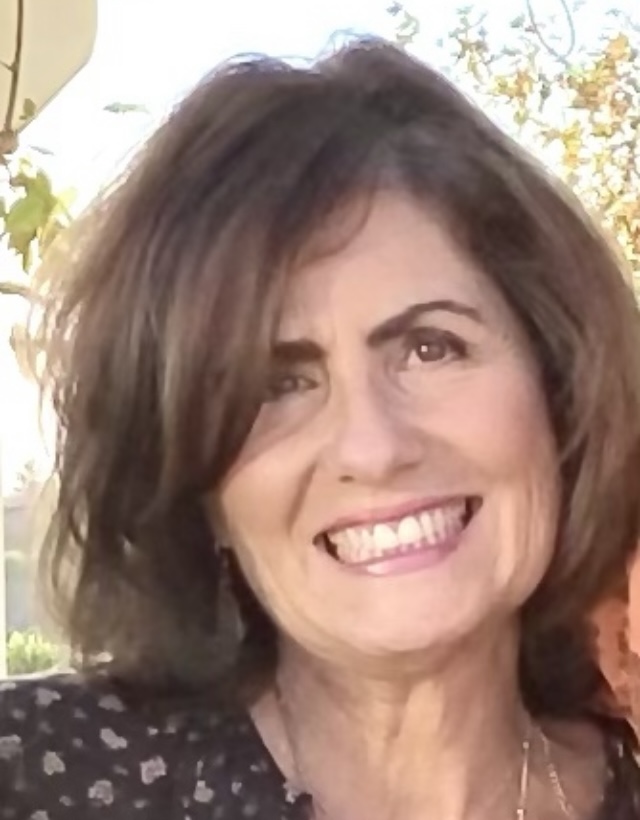 As a faculty member of the Clinical Medical Assisting (CMA) program at SJVC’s Ontario campus, Andrea Busby has one overreaching goal: Full support of all CMA students toward the successful completion of their program – and gainful employment in their new career field. You can count on that.
As a faculty member of the Clinical Medical Assisting (CMA) program at SJVC’s Ontario campus, Andrea Busby has one overreaching goal: Full support of all CMA students toward the successful completion of their program – and gainful employment in their new career field. You can count on that.
If a CMA student struggles, Andrea is in the trenches with them to help lift them up and out. She helps them find their fire to succeed. You want her in your corner. And that is exactly where she wants to be.
What does support look like to a Clinical Medical Assisting student?
We use mentorship in the CMA program that works very well. At the beginning of every class, we have a mentor-paring with someone who is generally half-way through the program and has discretionary time to work with someone who is at their most vulnerable. That first module of 5-weeks is usually when students are most insecure.
Not every student comes to us electronically savvy, so a mentor can help them with the computer system. Mentors can also bring new students into the social aspect of the campus, so they don’t feel so isolated.
Is this mentorship both personally and professionally beneficial?
It’s a powerful tool for both areas of growth and both new and settled-in students. Mentors sometimes just need that recognition of competence, and this mentorship draws out what we know is in them.
It also develops their ‘soft skills’: empathy, teamwork and leadership. Those elements are actually a bigger part of being a Medical Assistant than anyone realizes.
What do your CMA students most commonly struggle with?
Because many of our students are single mothers and fathers or are caring for a parent or working part-time or full-time and may have struggled academically in high school, this is scary for them. But the way our class is structured, they can take things in smaller chunks and it’s much easier to digest.
Each 5-week module they’re using the same types of tools and the material is delivered in the same way, as it relates to ebooks’ activities. Their instructors are another constant – they’re with them from start-to-finish.
Their fears usually lift after the first or second module.
What do you most hope to give your CMA students?
I try to make the class environment fun and interactive, very hands-on. We do a lot of role-playing and pair classmates to practice their technical skills. They perform blood-draws and injections on each other and with repetition they gain confidence pretty quickly.
I give them words of encouragement and work one-on-one with those who might be struggling.
I want to give them a sense of pride in their work. I want them to exhibit medical professionalism and communication skills that cross over all aspects of the work force: physicians, co-workers and patients, especially those with disabilities. I want our CMA students to know to speak to their superiors. The right way and wrong way to say something is included in their curriculum and we practice role-playing every day.
 How would you describe your teaching style?
How would you describe your teaching style?
I was a Medical Assistant, Cardiac Technician, and back office manager for over 30-years for physicians in private practice. I like talking to students about our job as a Medical Assistant and all the different skills that are performed in that role.
Teaching is something I never dreamed of and didn’t know if I would be a fit. But I was surprised to find that I absolutely love it.
What excites you in your role as an instructor in the CMA program?
Watching students get really excited about learning a skill and taking that into becoming a care giver. Seeing their understanding and empathy for others grow. I watch them evolve and get to that place of absolutely loving it.
Their growing level of excitement is one of the signs I look for. And knowing I helped them get there is very gratifying – very emotional, actually.
What are your favorite moments in the classroom?
When the light bulb comes on and you see the student say, ‘Ah, I get it now’. I get that a lot when I teach electrocardiogram. It is really intimidating and hard for a student to grasp at first. I watch them go from absolute fear of learning this to ‘I got this…and it’s not that complicated!’
Building blocks of small elements bring you to knowing how to do everything in the entire process.
Do you ever lose a student?
There are days when you just have to let someone go. It wasn’t their path. Sometimes somebody has just chosen the wrong path. Or a student may quit because of financial hardships or to care for a loved one. We encourage them to come back if they feel this is truly their path.
We also have online program options; we do everything we can to try to help them get to their dream.
Sometimes a familiar face will walk back through the door and it’s so exciting for them to come back and follow through with their commitment, to maybe put themselves first for just a little while.
Is there a quote or mantra you like to share with your students?
Yes. I’ll write it on the board or put in on a piece of paper and hand it to as student as they walk out the door: “Success is not final; failure is not fatal. It is the courage to continue that counts”. Winston Churchill. I got it from a mentor of mine years ago. It still holds true.
